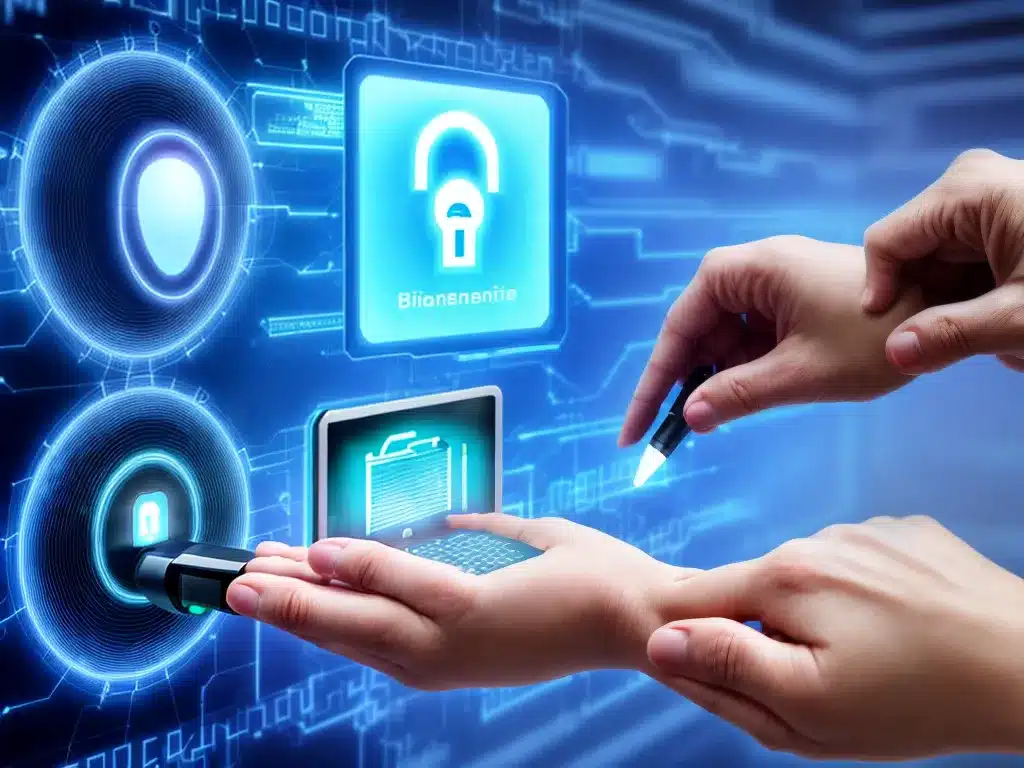Introduction
Cybersecurity is becoming increasingly important in our digitally connected world. As more sensitive user data is stored online, companies must find innovative ways to protect that data from breaches and misuse. Biometrics and behavioral analysis represent exciting new frontiers in security that leverage unique human characteristics and behaviors to verify identity and detect suspicious activity. In this article, I will provide an in-depth look at how these emerging technologies are transforming data security.
Biometric Authentication
Biometrics refers to identification and authentication techniques that rely on unique physical or behavioral traits. Some common examples include:
Fingerprint Scanning
- One of the most prevalent and reliable forms of biometric authentication. Fingerprint patterns are unique to each individual.
- Fingerprint scanners analyze and match fingerprint patterns to verify a user’s identity.
- Used in devices like smartphones and for building access. High accuracy and difficulty to spoof.
Facial Recognition
- Analyzes facial structure and features to match a face to an identity.
- Used for applications like unlocking smartphones and surveillance.
- Prone to errors with changes in lighting, aging, and obstructions.
Iris/Retina Scanning
- Scans unique patterns in the iris or retina of the eye.
- Very high accuracy due to unique randomness of eye patterns.
- Used for high security applications like government buildings and airports.
Voice Recognition
- Identifies individuals by analyzing unique vocal characteristics.
- Used for voice assistant and device unlocking. Accuracy varies greatly.
- Susceptible to spoofing attacks by mimicking voice.
Benefits of Biometrics
Biometric authentication brings several advantages over traditional password-based security:
- Convenience: No need to memorize or type passwords. Seamless and quick authentication.
- Security: Very difficult to fake or spoof biometric traits. Reduces risks of password leaks.
- Accuracy: Properly implemented biometrics have low error rates in verifying identity.
Biometrics provide a more user-friendly and secure method of identity verification for many applications. However, some key challenges remain:
- Privacy concerns over collection and storage of sensitive biometric data.
- Spoofing attacks using artificial replicas of fingerprints, faces, etc.
- Lack of secrecy since biometrics cannot be changed like passwords.
Case Study: Apple’s Face ID
Apple’s Face ID on the iPhone X revolutionized facial recognition technology with the following innovations:
- Captures a 3D depth map of the face using infrared light. Makes spoofing extremely difficult.
- Stores facial data locally on a secure enclave chip. Does not send data to Apple servers.
- Requires user attention to unlock. Prevents secret unauthorized access.
- Has advanced neural networks that adapt to changes in appearance over time.
This demonstrates how biometrics can be implemented securely and responsibly to enhance data protection.
Behavioral Analysis for Cybersecurity
In addition to physical traits, behavioral analysis examines patterns in human activities and behaviors to identify potential security threats. Some techniques include:
User Behavior Analytics
- Analyzes typical actions of users like login attempts, resource access, time online, etc.
- Detects anomalies and risky deviations that may indicate account takeover or insider threat.
Keystroke Dynamics
- Measures typing rhythm patterns that are unique to each individual.
- Used to passively authenticate users without added friction.
- Can determine if an unauthorized person is accessing an account.
Mouse Movement Patterns
- Tracks mouse movements, curve, speed, clicks, etc. Creates a unique profile.
- Like keystrokes, can passively authenticate users and detect impersonators.
Network Traffic Analysis
- Examines network activity metadata like source, destination, frequency, size, timing of communications.
- Identifies unusual or malicious traffic that may signal cyber attacks.
Artificial Intelligence
- Advanced AI algorithms can automatically analyze billions of behavioral data points to surface subtle anomalies and threat indicators.
- Self-learns and adapts to normal patterns for accurate detections.
Implementing Behavior Analytics
To deploy behavior analytics effectively, organizations should follow these best practices:
- Establish clear data collection policies and be transparent with users.
- Anonymize user data and remove personally identifiable information whenever possible.
- Only retain user analytics data needed for limited security purposes, then delete it.
- Allow users to access the behavioral data collected on them upon request.
- Conduct regular audits to ensure behavioral data practices remain ethical and compliant.
Responsible use of behavior analytics balanced with individual privacy safeguards will allow organizations to enhance security while maintaining user trust.
The Future of Security
Biometric authentication and behavior-based threat detection represent a major evolution in cybersecurity. When properly implemented, these technologies can significantly reduce data breaches and cyber attacks without adding major usability friction. However, privacy risks must be mitigated through policies that limit data collection, provide user transparency, and ensure ethical data practices. Overall, biometrics and behavior analytics illustrate the immense potential for data security when human factors are leveraged effectively. By understanding and responding to unique human characteristics and activities, organizations can stay one step ahead of sophisticated hackers and attackers. These advanced methods will likely become standard features of robust cybersecurity frameworks in the years ahead.












